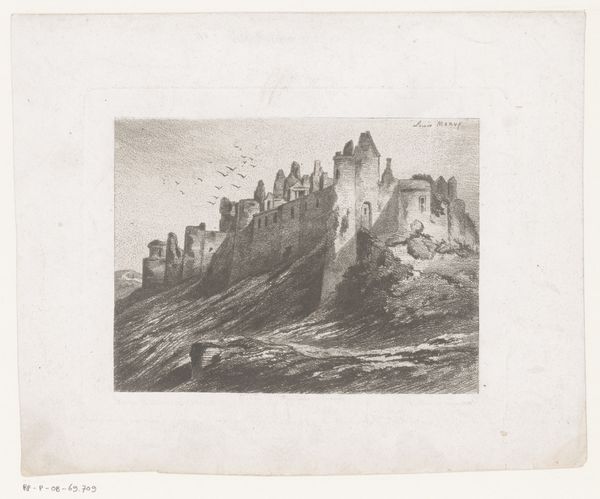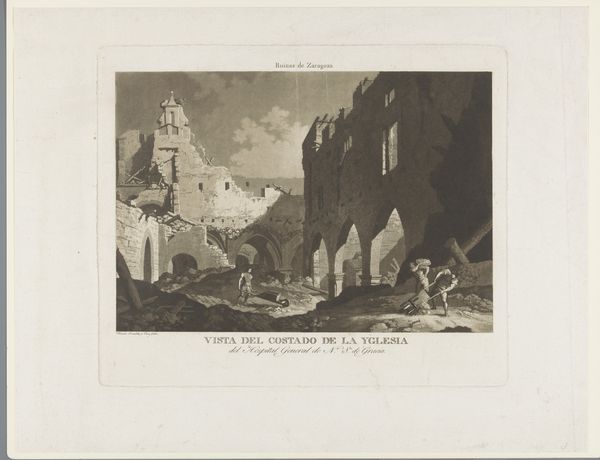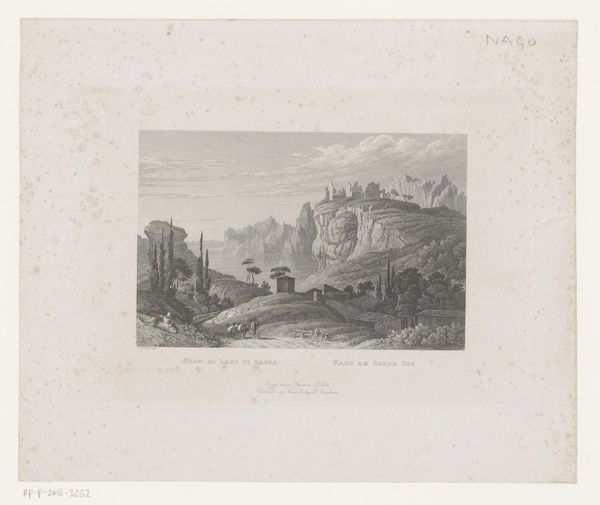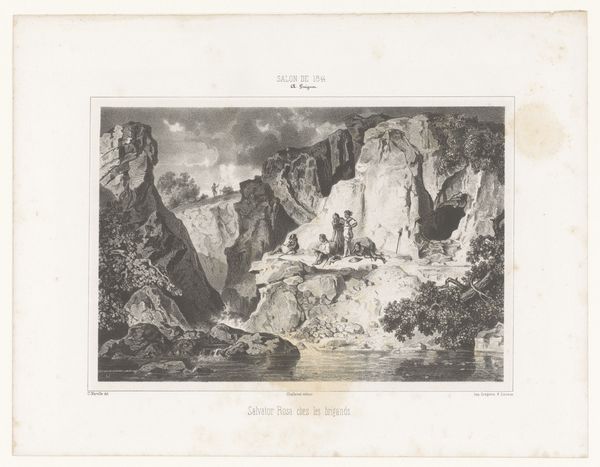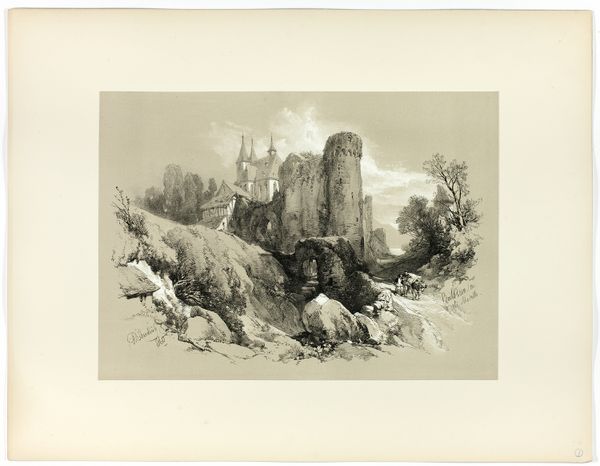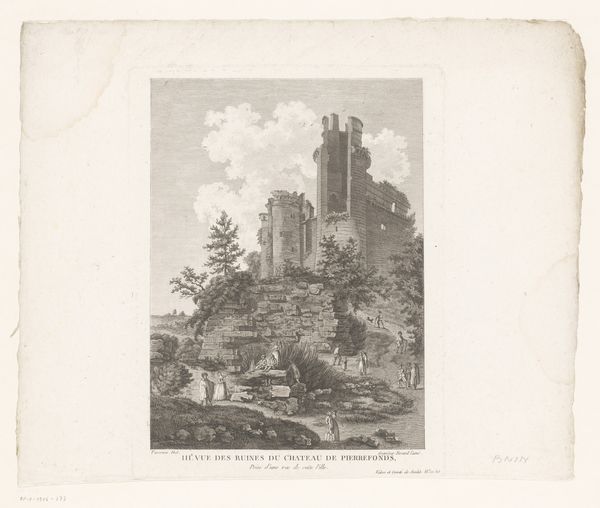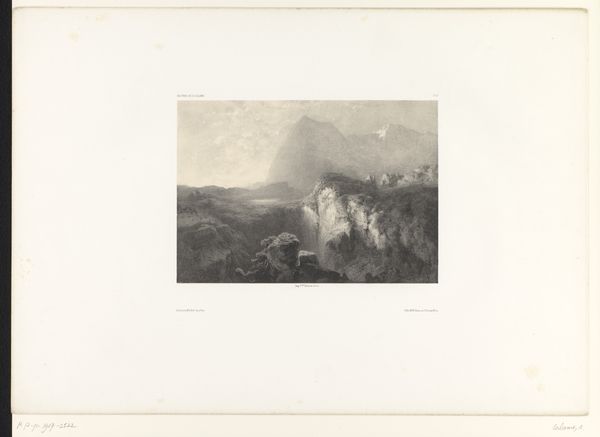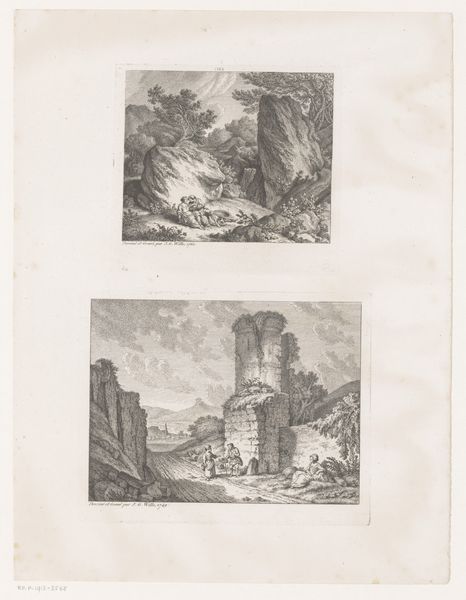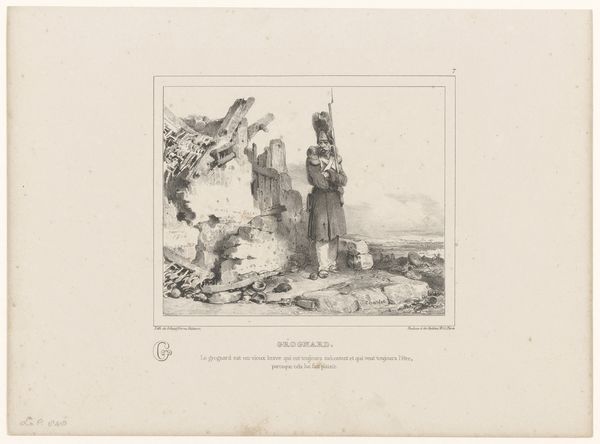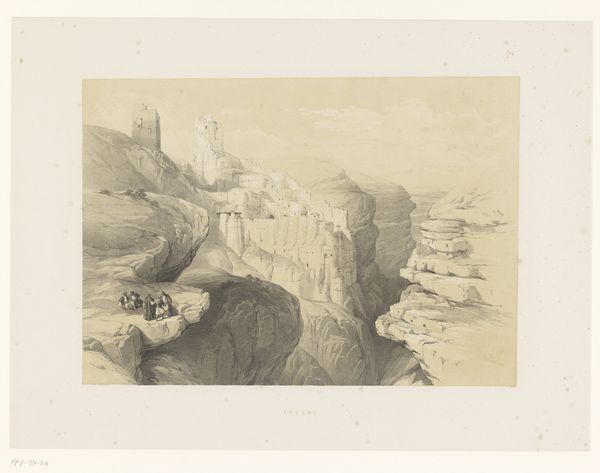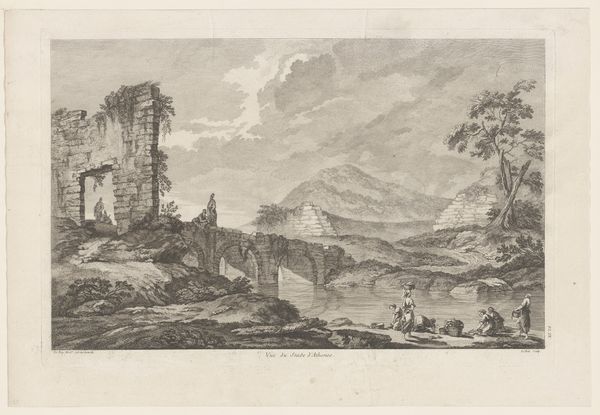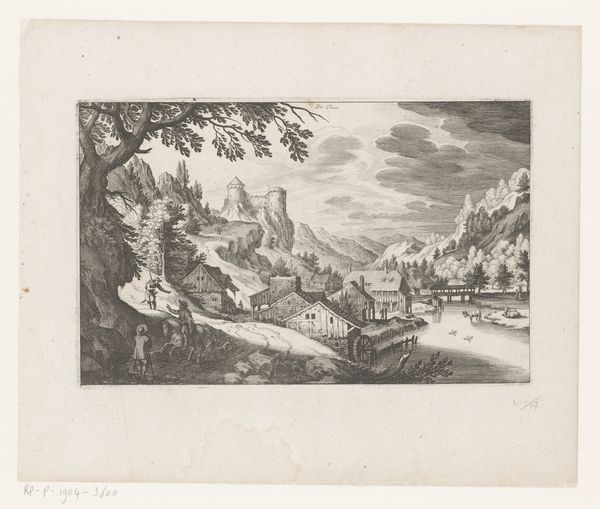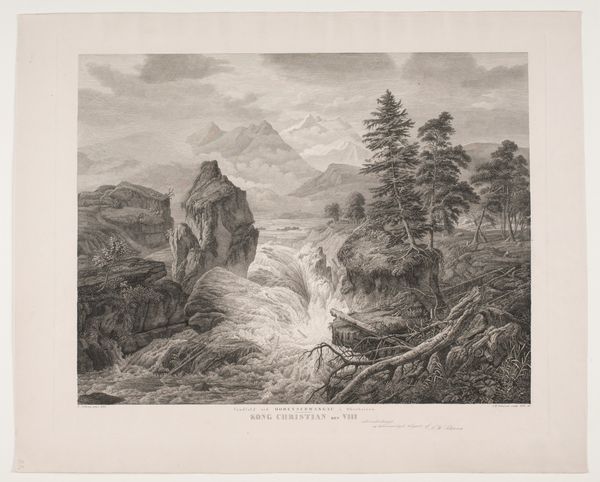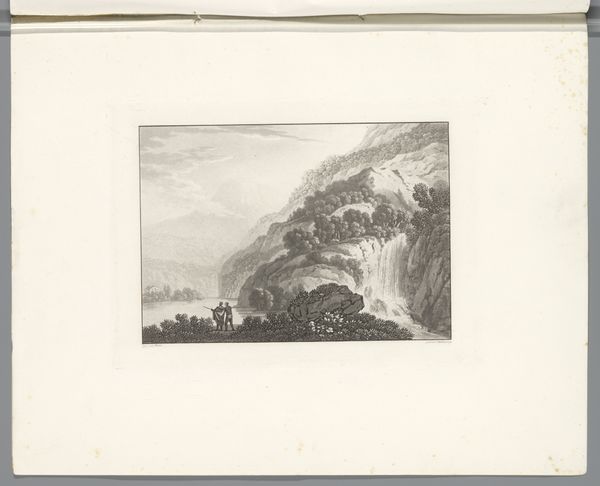
print, etching, engraving
# print
#
etching
#
old engraving style
#
landscape
#
romanticism
#
cityscape
#
history-painting
#
engraving
Dimensions: height 125 mm, width 184 mm
Copyright: Rijks Museum: Open Domain
This print, "Gezicht op Kasteel Nassau," was created by Johann Gabriel Friedrich Poppel, likely in the mid-19th century. It is an etching, a printmaking technique that relies on corrosive acid to create a design in metal. The process begins with a metal plate covered in a waxy ground. The artist scratches into this ground with a needle, exposing the metal. The plate is then dipped in acid, which bites into the exposed lines, creating grooves. The deeper and wider the lines, the more ink they hold. To make a print, the plate is inked, wiped clean, and then pressed against a sheet of paper. The pressure transfers the ink from the etched grooves to the paper, resulting in a reversed image of the original design. The fine, precise lines, and the gradations of tone achieved in this print speak to the artist's mastery of the etching technique, a process demanding both technical skill and artistic vision. By understanding the etching process, we gain a deeper appreciation for the labor and expertise involved in the creation of this print, recognizing its place within a broader history of craft and artistic production.
Comments
No comments
Be the first to comment and join the conversation on the ultimate creative platform.
